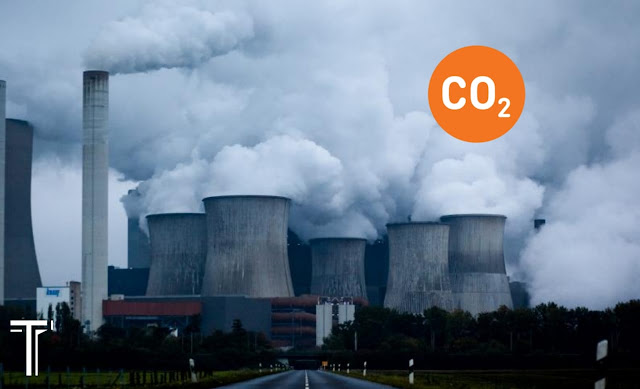How do scientists know that recent climate change is primarily caused by human activities?
Scientists have such high confidence that human activity is the primary driver of recent warming because of several converging lines of evidence, all pointing in the same direction.
These include “an understanding of basic physics, comparing observations with models, and fingerprinting the detailed patterns of climate change caused by different human and natural influences,” as stated in a 2018 report by the U.S. National Academy of Sciences and British Royal Society.
For instance, we have observed a 40% rise in CO2 levels since the dawn of the industrial age in the mid-1700s, from 280 parts per million (ppm) in the air to approximately 410 ppm now.
 |
| CO2 Emission - Climate Change is Real |
In 1970, CO2 levels were around 325 ppm, which means that most of the rise in CO2 from preindustrial levels has occurred in the last four decades, matching a time of rapid growth in industrial energy use and CO2 emissions.
In addition, the amount of total warming the planet has experienced since 1900 is inconsistent with the temperature change you would expect just from the observed natural changes, such as volcanic emissions and the decrease in solar radiation.
In fact, as noted, absent human-caused greenhouse gases, we would expect the Earth to be in a period of global cooling right now.
It is only by including all of the human activity, factoring in all of the greenhouse gases emitted by fossil fuel consumption, that we see consistency between observed temperature change and basic physics calculations.
There are numerous other “human fingerprints” on the pattern of climate changes we have observed in recent decades.
When scientists have specifically measured the type of carbon (the particular ratio of carbon isotopes) building up in our atmosphere, most of it is exactly the type that scientists know comes from the combustion of fossil fuels, as opposed to other sources, such as deforestation, which plays a much smaller role.
 |
| Graph on Temperature Rise |
The U.S. National Academy and United Kingdom’s Royal Society note: “The observed patterns of surface warming, temperature changes through the atmosphere, increases in ocean heat content, increases in atmospheric moisture, sea level rise, and increased melting of land and sea ice also match the patterns scientists expect to see due to rising levels of CO2 and other human-induced changes.”
In particular, climate science predicts that if the warming is caused by an increase in greenhouse gases, we expect the lower atmosphere (troposphere) to warm, the upper atmosphere (stratosphere) to cool, and the boundary between them (tropopause) to rise.
All of this has been observed. If, for instance, recent warming were due to increases in the intensity of radiation from the sun, then in addition to the troposphere, the stratosphere should be warming, too, which is not happening.
What connects the greenhouse gases with warming?
The website Skeptical Science summarizes the research findings:
- Satellites measure less heat escaping out to space, at the particular wavelengths that CO2 absorbs heat, thus finding “direct experimental evidence for a significant increase in the Earth’s greenhouse effect.”
- If less heat is escaping to space, where is it going? It’s going back to the Earth’s surface. Surface measurements confirm this, observing more downward infrared radiation. A closer look at the downward radiation finds more heat returning at CO2 wavelengths, leading to the conclusion that “this experimental data should effectively end the argument by sceptics that no experimental evidence exists for the connection between greenhouse gas increases in the atmosphere and global warming.”
Climate change is real?
 |
| Click the Above Image |
Moreover, we know the pattern of impacts from this warming are precisely what climate scientists predicted.
Finally, the confidence scientists have does not just come from the fact that every aspect of climate change in recent decades fits the precise pattern predicted from climate science for increases in human-caused greenhouse gases.
At the same time, no alternative theory has ever been presented that can account for all of the observations.
Moreover, such an alternative theory would not merely have to provide a mechanism to account for the warming and other observed changes, it would also have to come up with another as-yet-unknown mechanism that was somehow negating the warming that science has long predicted from human-caused greenhouse gases.
Also, Read How Climate change affects the colour of our Oceans.
Also, Read How Climate change affects the colour of our Oceans.

No comments:
Post a Comment